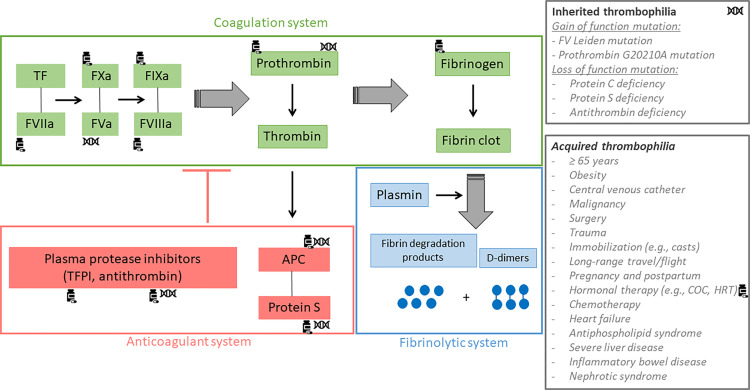Figure 2.
Coagulation, fibrinolytic and anticoagulant systems. The green rectangle refers to the coagulation system, the blue rectangle refers to the fibrinolytic system and the red rectangle refers to the anticoagulant system. Tissue factor (TF) plays an important role in the initiation of the coagulation process. Combined with activated factor VII, the complex activates FIX and FX. Subsequently, FIXa and FXa form two complexes with activated FV and activated FVIII respectively, leading to the conversion of prothrombin into thrombin. Once formed, thrombin cleaves fibrinogen to form the fibrin clot which is then degraded by the fibrinolytic system whose the main effector is plasmin. This releases fibrin degradation products and D-dimers. Thrombin also activates the protein C system in order to down regulate its own production. Indeed, once activated by thrombin, protein C forms a complex with protein S in order to inactivate factor Va and factor VIIIa, the two main co-factors of the intrinsic (IXa-VIIIa) and the prothrombinase (Xa-Va) complexes. The generation of thrombin is also regulated by other protease inhibitors like antithrombin (AT) and tissue factor pathway inhibitor, widely known as TFPI. Inherited and acquired thrombophilia can disrupt the coagulation, the fibrinolytic or the anticoagulant system leading to an increased risk of venous thromboembolism. Coagulation factors impacted by inherited thrombophilia are marked with the DNA-symbol and those impacted by the intake of combined oral contraceptives (COC) are marked with the drug-symbol. APC, activated protein C; TF, tissue factor; TFPI, tissue factor pathway inhibitor.

